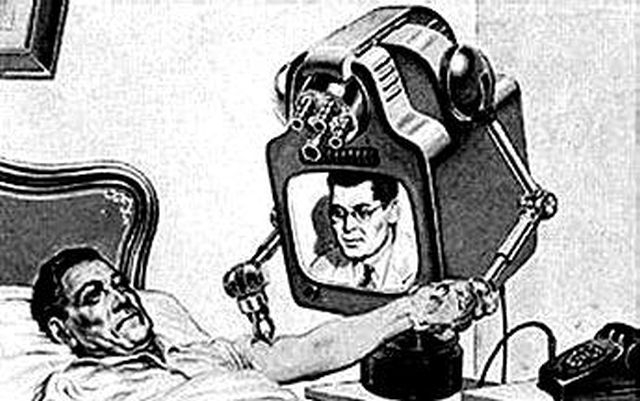Exactly How to Find Trustworthy Teledoctors for Your Medical Demands
Checking Out the Benefits and Obstacles of Teledoctors in Modern Medical Care
As the health care landscape evolves, teledoctors have arised as a critical component in bridging gaps in clinical gain access to and performance. While they provide the assurance of getting to remote areas and decreasing operational costs, the trip is not without its obstacles. Privacy problems, the electronic divide, and cybersecurity threats position considerable challenges that have to be addressed to harness their full capacity. How can the health care market equilibrium these advantages with the integral obstacles? This problem welcomes a much deeper expedition right into the transformative function of teledoctors fit the future of medical care delivery.
Expanding Access to Care
Telemedicine has actually emerged as a pivotal advancement in modern health care, substantially expanding access to take care of diverse populations. By leveraging electronic technology, teledoctors have transformed the traditional health care delivery design, making it feasible for clients in underserved or remote areas to obtain timely clinical assessment. This development is specifically advantageous for individuals living in country areas, where the shortage of health care facilities and professionals commonly results in delayed or inadequate treatment.
Teledoctors are important in linking the space developed by geographical obstacles. Via virtual assessments, patients can access a large variety of health care services without the need for extensive travel.
The combination of teledoctors right into health care systems additionally supports the monitoring of public health crises by facilitating rapid response and triage. During pandemics, for example, virtual appointments reduce the worry on physical health care centers, minimizing exposure risks for both people and health care companies. As telemedicine remains to evolve, it assures to reshape the landscape of medical care accessibility, making it more comprehensive and effective.
Cost-Effectiveness of Teledoctors
The cost-effectiveness of teledoctors is a significant variable driving their widespread adoption in healthcare systems. By minimizing the demand for physical infrastructure and in-person gos to, teledoctors offer an even more budget friendly choice to conventional medical care distribution. This model allows doctor to reduced functional costs, such as those linked with keeping physical workplaces and using considerable on-site personnel. teledoctors. As a result, these savings can be handed down to individuals in the kind of reduced examination charges, making health care more available to a more comprehensive population.
In addition, teledoctors promote a much more effective usage of medical care resources by reducing unneeded emergency clinic check outs and medical facility admissions. People can access prompt assessments for small conditions or follow-up treatment, which assists to reduce the problem on overstretched health care centers. This effectiveness not just results in cost financial savings for healthcare companies yet likewise reduces the economic stress on clients who might otherwise encounter pricey medical facility expenses.
Furthermore, teledoctors can aid in taking care of chronic diseases better by providing consistent tracking and timely interventions. This positive approach can avoid issues, thus decreasing lasting treatment costs. On the whole, teledoctors provide a feasible remedy to the intensifying expenses of medical care, while maintaining high quality care delivery.
Enhancing Patient Ease
While cost-effectiveness plays a pivotal role in the rise of teledoctors, boosting client convenience stands as one more engaging advantage of this medical care design. With the integration of teledoctors, patients can bypass the traditionally taxing procedure of scheduling and participating in in-person appointments.
Additionally, teledoctors use flexible scheduling, enabling clients to set up examinations at times that ideal suit their specialist and personal commitments. This flexibility is very useful for individuals balancing requiring click this work schedules or family members responsibilities, making sure that medical care can be integrated flawlessly right into their lives. In addition, the ability to accessibility medical professionals from the convenience of one's home can result in raised person engagement and adherence to therapy plans, as the barriers to seeking treatment are reduced.
The comfort given by teledoctors not just boosts the client experience yet also adds to an extra responsive and efficient healthcare shipment system, ultimately supporting much better wellness end results.
Addressing Personal Privacy Problems
Amidst the growing adoption of teledoctors, privacy concerns arise as a considerable consideration. As health care significantly depends on electronic platforms, guaranteeing the privacy of person info ends up being vital. The digitization of clinical records and the usage of telecommunication modern technologies require durable safety and security steps to shield sensitive information from unauthorized access and violations.
Healthcare carriers must stick to strict regulations, such as the Health Insurance Coverage Mobility and Responsibility Act (HIPAA) in the United States, which develops nationwide requirements for guarding clinical information. Conformity with such policies is vital in maintaining person depend on and guaranteeing their data is taken care of responsibly. Security of information, safe and secure communication channels, and normal audits are some of the procedures that can be applied to enhance information defense.
Cybersecurity dangers are developing, and health care companies have to stay watchful to new susceptabilities. Furthermore, informing both clients and medical care carriers about best methods in information privacy is vital.
As teledoctors come to be a lot more important to medical care shipment, attending to privacy problems is necessary to ensure both the efficiency and reliability of these solutions.

Browsing the Digital Divide
Bridging the electronic divide is an essential challenge in the widespread adoption of teledoctors. teledoctors. This divide includes variations in accessibility to digital technology, particularly among rural, low-income, and elderly populaces. These groups usually do not have the necessary gadgets, trusted net connection, or digital proficiency required for effective involvement in telehealth solutions. Consequently, the benefits of teledoctors-- such as raised availability and convenience-- remain unreachable for lots of individuals who could most profit from them.
Furthermore, initiatives to fund technology for low-income families can play an essential duty in guaranteeing equitable gain access to. Medical care companies and sites area companies should team up to use digital proficiency programs, equipping patients to navigate telehealth systems confidently.

Verdict
The assimilation of teledoctors into contemporary healthcare uses substantial advantages, including increased access to care, cost-effectiveness, and boosted patient benefit. Nonetheless, obstacles such as personal privacy problems, the electronic divide, and cybersecurity dangers should be dealt with to maximize these benefits. By applying robust information security measures, enhancing digital proficiency, and guaranteeing safe technological framework, the possibility of teledoctors can be fully understood, promoting fair health care delivery and transforming the healthcare experience for all people.
